An Oasis in the Heart of Spain's Arid Plains
Friday, August 25, 2023

An explosion of the purest nature, with waterfalls and cascades, the Ruidera Lakes (Lagunas de Ruidera) have been declared a Biosphere Reserve by UNESCO, and appear before the visitor's eyes as an oasis of water and plants in the heart of La Mancha's arid plains. Wetlands with extraordinary flora and fauna, along with unforgettable dawns and dusks await those who decide to visit this unique site.
The Ruidera Lakes are naturally formed by a group of 16 small lakes on different levels with an altitude difference of 120m between the first lake called "La Blanca" and the last lake "La Cenagosa" . Some are interconnected, and turn this otherwise arid area of ochre tones, into a real oasis. Besides the area’s natural beauty, it also offers the chance to practise a variety of leisure and sports activities.
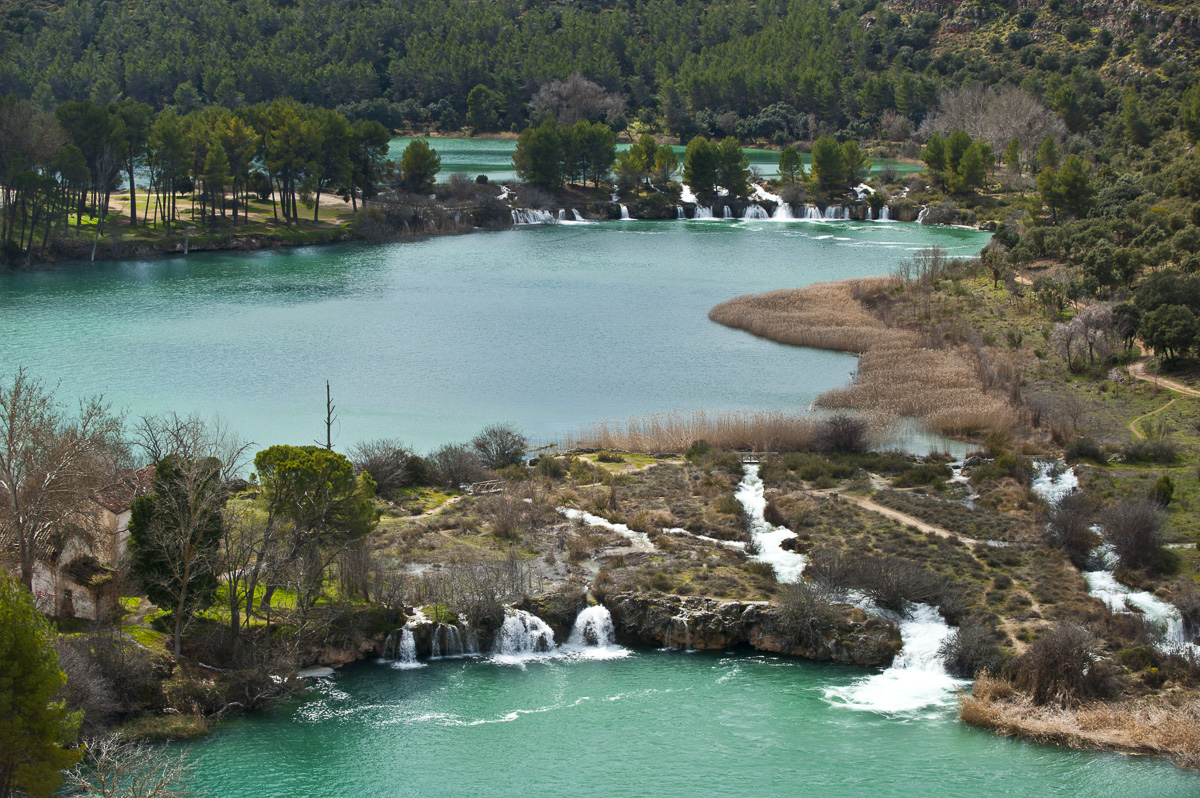
Walking, fishing, golf, canoeing, sailing and scuba diving are some of the activities you can enjoy in this protected Nature Reserve which spans over 4,000 hectares between the provinces of Ciudad Real and Albacete and fortunately for us is just a stones throw away from our village property in Valdepeñas.
These lakes also provide a rest area for migratory birds such as common pochards, red-crested pochards, common mallard, great crested grebes and purple herons. These species live together with a rich autochthonous fauna full of birds including partridges, azure-winged magpies, woodpigeons, and bee-eaters; as well as foxes,otters, rabbits, genet and bats.

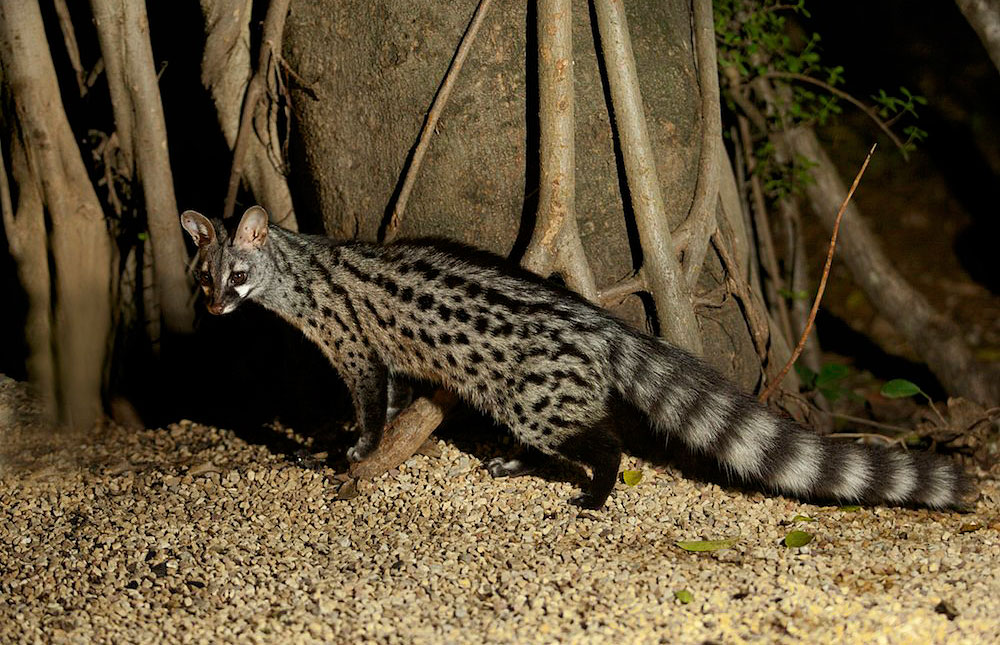
Its waters are full of carp, barbells, pike and ducks living among reeds, reed mace, and giant reeds and surrounded by holm oaks, junipers, savins and thyme - just a few of the more than 800 plant species to be found in this area which perfume the air around the lakes.
The source of these lakes is a series of springs and streams that come together between the towns Ossa de Montiel and Ruidera. This is how these small, shallow, crystal-clear lakes are formed. The Guadiana River (one of Spain’s longest) has its source here too, and her waters disappear underground for 15 km to then rise again in the towns of Villarubia de los Ojos and Daimiel.
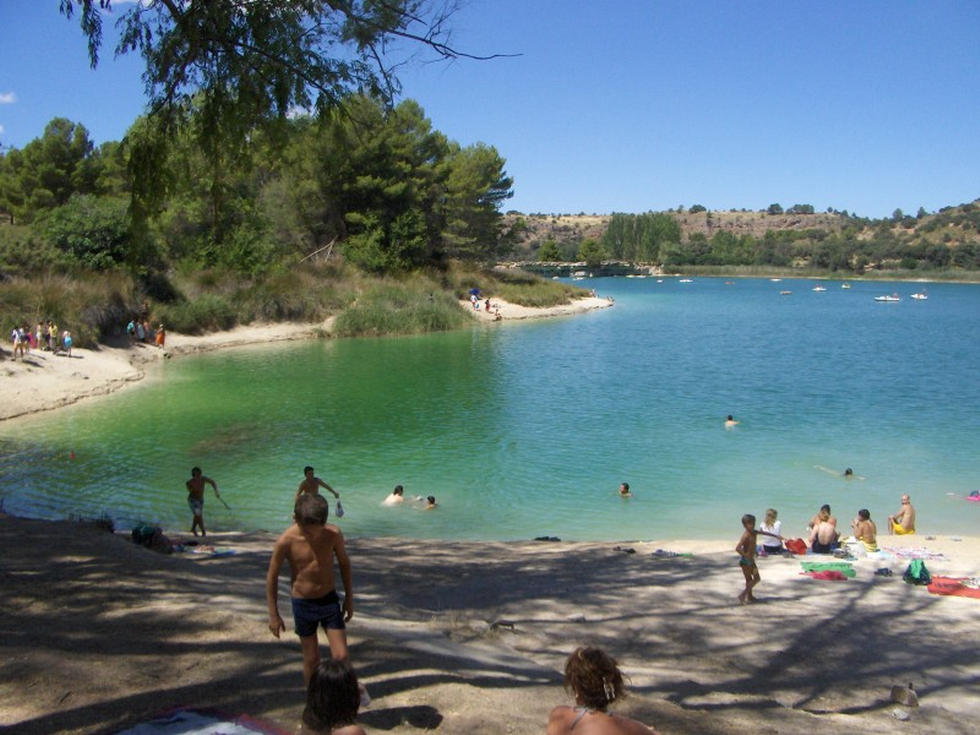
But the lakes are much more than just scenery and nature. In addition to the outings and water sports it is a fantastic area to enjoy hiking, hunting, fishing, horse riding or cycling, as well as 4x4 tours whihc are real fun! The more adventurous can practise paragliding or caving in the many fissures and grottos to be found in the area. And of course, you can play golf on a nine-hole course in the nearby town of Tomelloso, just fifteen minutes from the lakes there is also has a go-kart racing track. In Torrenueva there is also a five star hotel with a fantastic 18 hole golf course if you fancy some true creature comforts!

Even Miguel de Cervantes, the literary father of Don Quixote de la Mancha was captivated by the charm of the Ruidera lakes. He set part of his literary masterpiece in the Campo de Montiel area, which takes in most of the present-day Nature Reserve.
Nearby is Campo de Criptana, a town where we can admire the windmills Don Quixote mistook for giants and which are still fully integrated in the landscape of this welcoming land. It is also home to a unique local cuisine.
As far as gastronomy is concerned, there is an extended and varied choice of dishes: gachas (special dough), migas (breadcrumbs fried in garlic), ratatouille, broth with garlic, egg and bread, pulse stews, gazpacho (cold summer soup), game, caldereta (stew), roasts, duelos y quebrantos (chorizo and lamb brains sautéed with egg)... most of which appear in Cervante's immortal work. We cannot forget manchego cheese, which is known worldwide and made from sheep’s milk, or the wines of the area with its Designation of Origin. An true culinary delight to acompany Spain's great natural oasis.
Ver mapa más grande
 2
Like
Published at 8:25 PM Comments (0)
2
Like
Published at 8:25 PM Comments (0)
The coldest towns in Spain during the summer
Friday, August 18, 2023

ALP, Girona
Summer is one of the most anticipated times for many and the heat continues to be a draw for many tourists. Rising temperatures cause all kinds of changes. Human beings begin to socialise in other ways, taking advantage of the greater number of hours of sunshine that all kinds of different activities entail at this time of year.
Spain is a world reference for tourism. Every year millions of people visit the country in search of innumerable offerings. Despite the fact that many seek sun and high temperatures in Spain, we can also find municipalities where they can escape from these in summer. The first town to which we must travel if we do not want to suffer the effects of the heat is Ezcaray. This municipality in La Rioja offers us an average summer temperature of 19 degrees, making it a great option.

Another great option is Griegos, in Teruel. This, in addition, has the distinction of being the coldest town in Spain during the summer season as its more than 1,500 meters above sea level in the center of the Sierra de Albarracín, a refuge against heat waves.

With an average temperature of 17.5 degrees in summer, Isaba, in Navarra, can also be a great escape. Thanks to its location in the Roncal Valley, temperatures do not rise excessively, making it a highly recommended option.

This also happens in León, specifically in Puebla de Lillo. The mountains ensure that the average summer temperature does not exceed 17 degrees, a real asset in summer.
With a totally different environment, we find the Cíes Islands in Galicia. Surrounded by water and sand, these have an average temperature of 14 degrees in summer.
Returning to the mountains we find Bellver de la Cerdanya. Barely 19 degrees in July make it a benchmark for escaping the heat in Spain. This Catalan town also has a large number of options such as adventure or sports tourism.
Also in Catalonia, we find another excellent option. Surrounded by nature Alp, in Girona, is a great municipality to escape the heat in summer. Lastly, the town of Cercedilla in Madrid is worth mentioning for its summer temperatures. This enclave registers an average temperature during the day that is around 11ºC minimum and around 20ºC maximum in summer, an ideal location for those who dislike the heat.
 2
Like
Published at 10:21 PM Comments (1)
2
Like
Published at 10:21 PM Comments (1)
Pacharan - the cure for all illnesses
Tuesday, August 8, 2023
 Legend has it that Blanca de Navarra (1385-1441) was cured of all her ills after she drank Pacharan at the Santa María de Nieva Monastery. Six hundred years on, this ruby-red anisette flavoured nectar obtained from sloe berries has become an almost obligatory finale to any typical Navarre meal as the preferred digestif. So it would be an ideal ending for the festive meals we are currently enjoying! Legend has it that Blanca de Navarra (1385-1441) was cured of all her ills after she drank Pacharan at the Santa María de Nieva Monastery. Six hundred years on, this ruby-red anisette flavoured nectar obtained from sloe berries has become an almost obligatory finale to any typical Navarre meal as the preferred digestif. So it would be an ideal ending for the festive meals we are currently enjoying!
A drive or a cycle around the centre of Navarre, is a pleasure for the senses: varied landscapes, beautiful villages, magnificent monasteries and encounters with hardworking people, all rolled into one easily accessible experience.
The A-12 from Pamplona to Logroño runs parallel to the Way of St. James and round Perdon Wind Farm, brushing Puente del Reina and taking you directly to Estella, capital of the River Ega region. Close by, just three kilometres from Abarzuza, where Navarre's best home-made pacharan (sloe berry liquor) is produced, is Iranzu Monastery, built in the 12th century by Cistercian monks in the foothills of the Urbasa mountain chain; today it is inhabited by Theatine monks. It was subsequently abandoned and later restored by the Navarrese government's Príncipe de Viana Foundation. It is a beautiful Medieval ensemble of buildings. Visitors can stay at the Hospederia, where they can savour the local pacharan.

Iranzu Monastery


In the heart of Estella, just the other side of Azucarero bridge, which spans the river Ega and dates back to medieval times, is the Plaza San Martin, with the 16th century Fuente de Los Chorros fountain. This is where calle Rua starts. This street, narrow and full of charm, is full of magnificent 16th-century buildings and Gothic arches. However, before turning into this street, first of all visit the ensemble of made up of the Plaza San Martin, the palace of the Navarrese kings - a late Romanesque architectural jewel that has been converted into the Gustavo de Maeztu Museum -, the Courthouse, which was the Town Hall from the 14th to the 19th century, and the Fortress-Church of San Pedro de la Rua, which dates back to the 12th century and has a marvellous outdoor cloister.

Next, you will come to the Jewish Quarter. Very nearby you will find the 12th century Church of the Santo Sepulcro with its magnificent 14th-century portal, although the building is closed to the public. Going towards the city centre will take you to the Carcel bridge, also of Medieval origin.
From the bridge, you will be able to see the Church of Santa María Jus del Castillo, which was a synagogue before it was converted to a Romanesque church in the 12th century. Also worth a visit is the Church of San Miguel to see its beautiful 12th-century portico.
Three kilometres from Estella, going towards Logroño, stands Irache Monastery. It was built by the Benedictine monks in the 11th century and today it comprises an ensemble of Medieval, Renaissance and Baroque buildings. It has been a hostel for pilgrims, a university and work will soon begin to convert it into a Parador (State-run hotel).

 The next stop in the itinerary is Dicastillo, which can be reached by taking the NA-122, and then turning off onto the NA-6341. This is a village set on the hillside with a main street full of stately homes sporting coats of arms. The most spectacular is the Palacio de la Vega. Owned by Countess Vega del Pozo, it was built at the end of the 19th century in pure Neo-gothic style. It is an impressive building, due to its size, its imposing appearance and its location on top of a hill. From Dicastillo it is best to go back to Estella and once again take the A-12, and then the N-111, which will take you to Viana. The next stop in the itinerary is Dicastillo, which can be reached by taking the NA-122, and then turning off onto the NA-6341. This is a village set on the hillside with a main street full of stately homes sporting coats of arms. The most spectacular is the Palacio de la Vega. Owned by Countess Vega del Pozo, it was built at the end of the 19th century in pure Neo-gothic style. It is an impressive building, due to its size, its imposing appearance and its location on top of a hill. From Dicastillo it is best to go back to Estella and once again take the A-12, and then the N-111, which will take you to Viana.
The town, just like the whole route, is closely linked to the Way of St James. The art, history and monumental nature of its buildings make it a place of special interest. It is a walled town, with a high street lined with stone houses adorned with coats of arms. In 2007 it celebrated the fifth centenary of Cesar Boria, who was mortally wounded as he rode these lands in his endeavour to win back Viana castle for the king of Navarre. You can finish the route at the Church of Santa María de Viana, where you can listen to the Gregorian chants that can be heard inside.
The drink Pacharan is basically a liqueur obtained by macerating sloe berries - the bluish-black fruit from the blackthorn (Prunus spinosa)
The name comes from the Basque word "basaran" which means sloe. Pacharan has always been well known and was drunk in Navarre as far back as the Middle Ages.
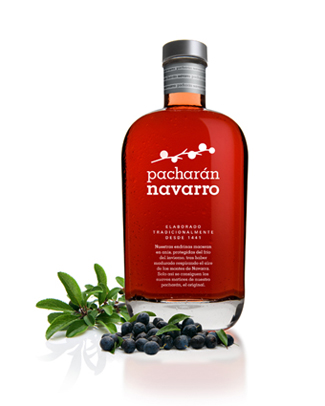 Wild blackthorns can be found all over Europe and they have been cultivated in Navarre since 1997. The sloe berries are harvested in autumn. Wild blackthorns can be found all over Europe and they have been cultivated in Navarre since 1997. The sloe berries are harvested in autumn.
Pacharan should be red or intense pink in colour. The presence of sediment or cloudiness indicates incorrect filtering. It has a high energy content: approximately 292 kcal per 100 ml, which comes from its alcohol content - between 25% and 30% - and the sugar content so moderate consumption is recommended.
The gastronomy in this region is rich and varied: The gorrín asado (baked suckling pig) is a typical dish of Estella; however, the seasoned red beans with belly pork, small stuffed peppers, vegetable panache, lamb chilindron or ajoarriero, are also delicious, always accompanied by the great wines that visitors enjoy so much. For dessert, cheese for Urbasa, made from (latxa sheep's milk) is a must that will delight any palate. And as the grand finale, the obligatory pacharan.
Pacharan liqueur, Urbasa cheese and Rocas del Puy are almost essential purchases for all visitors who decide to travel through Navarre. The brand of Pacharan and the size of the bottle chosen in the wineries and food or wine stores will depend on each visitor's tastes and requirements. Cheeses can be purchased in specialised shops, supermarkets and in the rural houses in the area, and the Rocas del Puy, toasted hazelnuts covered in dark chocolate, in cake shops.
Taking into account the climate, the best time to visit the area of Pamplona, Dicastillo and Viana is during spring and summer. The trees that adorn this area parallel to the Way of St James paint a landscape that uses all the colours of the palette. In autumn the sloes are harvested, which is something not to be missed.
Vega del Pozo Palace in Dicastillo was built at the end of the 19th century, having been expressly commissioned by Countess Vega del Pozo. It is outstanding not only because of its unique geographical placement but also because of its huge size and spectacular architecture.
The Church of San Pedro de la Rua in Estella and its cloister make up a beautiful ensemble. Built in late Romanesque style, it has an impressive entrance stairway. Its façade dates back to the middle of the 13th century. The cloister, built in the early 12th century, was partially demolished in the 16th century. Its steeples are of extremely high sculptural quality.
The annual festivities in Viana are held from 21 to 25 July. The festivities in honour of the patron saints of Estella, which are the most important in this area of Central Navarre, begin on the Friday before the first Sunday of August and last a week.
It is a province which is well worth a visit.
 - Copy 1.jpg)
Parque Urredera, Navarra
 3
Like
Published at 11:06 AM Comments (1)
3
Like
Published at 11:06 AM Comments (1)
6 Nature Spots in the Province of Alicante that you should visit
Friday, August 4, 2023
The province of Alicante not only offers us great beaches in which to enjoy the summer but also beautiful natural spaces to explore its trails, observe its fauna and flora and practice all kinds of outdoor activities, as well as various adventure sports.
If you are on holiday in Alicante, do not miss some of the most beautiful places in this Autonomous Community. Take note of these 6 nature spots that really must be visited.
1. Clot de Galvany
Clot de Galvany (Av. Del Carabasí, 82, 03195 Port Marí, Alicante) is located in the municipality of Elche, catalogued as a Municipal Natural Area and Biological Station, as well as a Site of Community Interest (SCI) and Special Protection Area for las Aves (ZEPA) in a large part of its 336 hectares.
In this space, not only flora and fauna are of interest but you will also be able to see fossils and geological formations, as well as ethnographic and archaeological heritage. So be sure to explore its routes and take the opportunity to discover its 7 viewpoints and bird observatories. The visit can begin in the Aula de la Naturaleza, an interpretation centre where you can find out about the surroundings, visit the garden and the recreational area. Free guided tours are offered on Sundays and holidays and special activities are usually organised the rest of the week.

2. Carrascal de Font Roja Natural Park
Declared a Natural Park in 1987, Font Roja is located in the municipalities of Alcoy and Ibi and is another of the nature enclaves that you cannot miss if visiting Alicante. It spreads for 2,298 hectares, north of the Sierra del Menejador, with an impressive oak forest.
It is only 11 kilometres from the centre of Alcoy. Essential places to visit are the Font Roja Natura Centre and the Sanctuary, and there are 3 hiking trails (no bikes allowed): the climb to the Menejador - about 6.5 kilometres, the Barranc del Infern - about 5 kilometres and then a small stretch of less than 2 kilometres which will only take about 45 minutes.
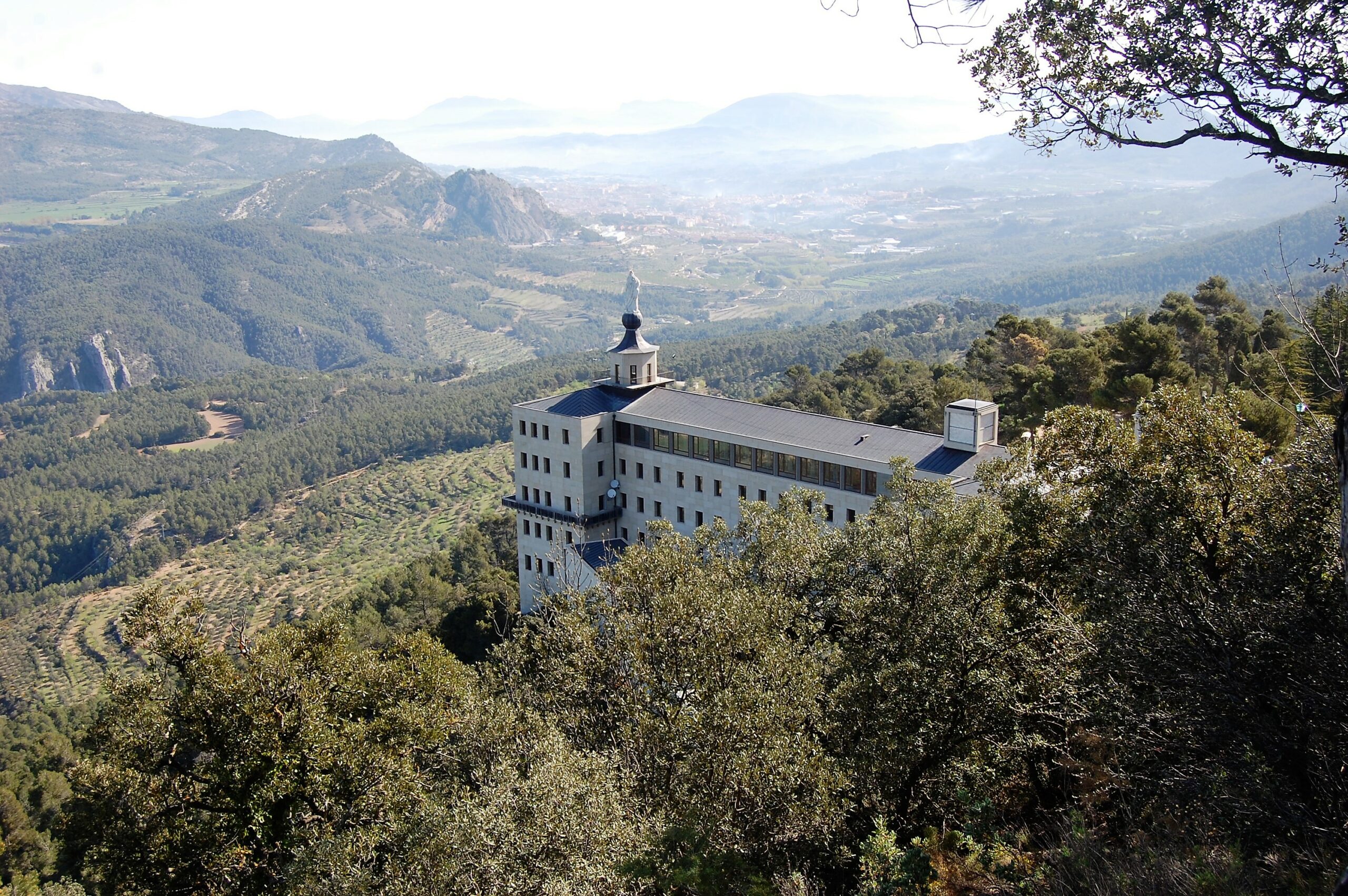
3. Salinas de Santa Pola Natural Park
With about 2470 hectares, the Salinas de Santa Pola Natural Park is a wetland included in the RAMSAR list (most important wetlands in the world) and catalogued as an Area of Special Importance for Birds (ZEPA). It is located in the bay of Santa Pola and is a beautiful example of conservation and traditional use of the environment since the main economic activity in the area is the extraction of salt.
The Salt Museum and Visitor Interpretation Center of the Salinas de Santa Pola Natural Park (Av. Zaragoza, 45, 03130 Santa Pola, Alicante) is open every day and offers all the information you need to get to know the salt flats and tour the park, in addition to routes and guided tours.

4. Natural Park of the Lagunas de La Mata and Torrevieja
The Natural Park of the Lagunas de la Mata and Torrevieja, declared as such in 1996, is located by what many know as the Valencian Dead Sea, although you have to remember that bathing in its waters is prohibited. In fact, you have almost certainly seen a photograph of its pink lagoons, with a concentration of 350 grams of pinkish pigment per litre of water, which is produced by bacteria. The lagoon is located very close to the Torrevieja salt flats.
Its 3700 hectares are distributed within the municipalities of Torrevieja, Guardamar del Segura, Rojales and Los Montesinos. There you will find a visitor centre, numerous viewpoints and bird observatories, parking for cars and bicycles and a recreational area, as well as interpretive routes and conveniently marked trails.

5. Serra Gelada Natural Park
Next to the Mediterranean Sea, there is a beautiful mountain range that you will just love to explore, perfect for hiking and mountain biking. In the Serra Gelada Natural Park (Camí Vell del Far, 18, 03581, Alicante) you can follow a simple route to the beautiful Faro de l’Albir, descend to the old ocher mines and contemplate the views from its cliffs. It is the first land maritime park in the community where you can enjoy a wonderful landscape of sea and mountains at the same time.
.jpg)
6. El Hondo Natural Park
The El Hondo Natural Park is currently located on the land occupied by the old lagoon of Elche, at the mouth of the Vinalopó River. The park extends through the municipalities of Elche, Crevillent, San Felipe Neri, Dolores and Catray, it is classified as a ZEPA zone and included in the RAMSAR listings.
It is a delight to walk along its walkways and stop at its observatories to contemplate the many birds that inhabit it. All the routes are signposted and are of low difficulty, as all are relatively flat, so it is perfect for people of all ages and for walking or cycling.

 1
Like
Published at 8:20 PM Comments (0)
1
Like
Published at 8:20 PM Comments (0)
Spam post or Abuse? Please let us know
|
|